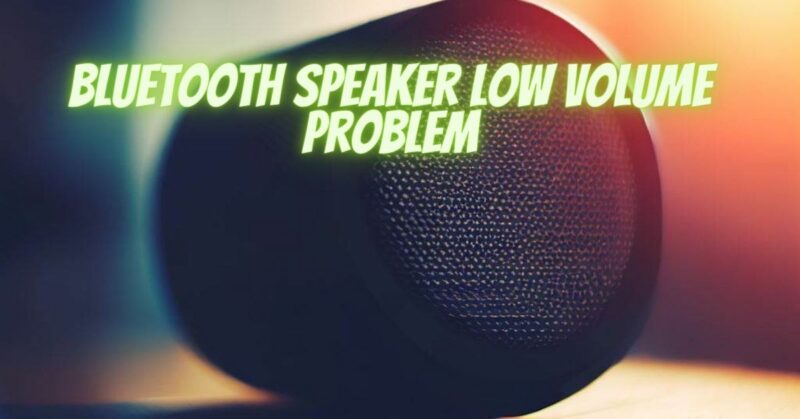Bluetooth speakers have become popular for their convenience and portability, allowing you to enjoy your favorite music wirelessly. However, encountering low volume issues can dampen your listening experience. In this article, we will explore common causes of low volume problems with Bluetooth speakers and provide troubleshooting steps to help you address them.
- Check Volume Settings:
Begin by checking the volume settings on your Bluetooth device and the speaker itself. Ensure that both are set to an adequate volume level. Sometimes, the volume may be adjusted lower than desired, leading to perceived low volume output.
- Distance and Interference:
Check the distance between your Bluetooth device and the speaker. Bluetooth connectivity can be affected by obstacles and interference. Move your device closer to the speaker to ensure a strong and stable connection, as a weak connection can result in reduced volume output.
- Remove Obstructions:
Clear any obstructions between your Bluetooth device and the speaker. Objects like walls, furniture, or other electronic devices can interfere with the Bluetooth signal and weaken the audio transmission. Clearing the path between the devices can help improve the volume levels.
- Battery Level:
Check the battery level of your Bluetooth speaker. If the battery is running low, the speaker may automatically lower the volume to conserve power. Charge the speaker fully or connect it to a power source to ensure optimal volume output.
- Equalizer Settings:
Some Bluetooth speakers have built-in equalizer settings that allow you to adjust the audio output. Check the equalizer settings on your speaker or the connected device and ensure that they are not set to a mode that reduces the bass or overall volume. Experiment with different equalizer presets to find the one that suits your preferences.
- Audio Source Output:
Ensure that the audio source you are playing from (such as your smartphone or computer) is set to maximum volume. Sometimes, the source device’s volume may not sync with the Bluetooth speaker, resulting in lower volume levels. Increase the volume on the source device to maximize the output.
- Reset Bluetooth Connection:
Disconnect and reconnect the Bluetooth connection between your device and the speaker. Sometimes, a temporary glitch or interference can affect the volume output. Resetting the connection can help establish a fresh and stable connection, potentially resolving the low volume problem.
- Firmware Updates:
Check if there are any firmware updates available for your Bluetooth speaker. Manufacturers often release updates to improve performance and address any known issues, including volume-related problems. Visit the manufacturer’s website or consult the user manual for instructions on updating the firmware.
- Test with Another Device:
Test the Bluetooth speaker with another device to rule out any issues specific to your original device. Connect the speaker to a different smartphone, tablet, or computer and check if the volume output improves. If the volume is significantly better with another device, the problem may lie with your original device’s settings or configuration.
Conclusion:
Experiencing low volume with your Bluetooth speaker can be frustrating, but by following these troubleshooting steps, you can often address the issue. Check the volume settings, ensure a strong and close Bluetooth connection, remove obstructions, and consider the battery level. Adjust the equalizer settings and maximize the audio source output. Reset the Bluetooth connection, check for firmware updates, and test with another device if needed. By systematically addressing these potential causes, you can hopefully resolve the low volume problem and enjoy your music with optimal volume and clarity through your Bluetooth speaker.


